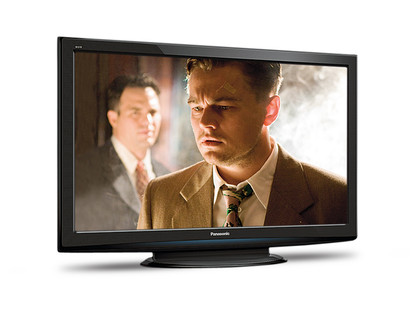Why you can trust TechRadar

If your eyes lit up at the mention of Freeview HD back there, we're duty bound to potentially put a bit of a damper on things by saying that the current coverage area for Freeview HD is extremely limited, with only a handful of transmitters currently able to broadcast the HD signal. Check out the postcode checker to see if it's available in your area.
It also has to be said that at the moment the Freeview HD service only holds two HD channels: BBC HD and ITV HD. But 4HD is coming soon, and there are even rumours of a second BBC HD channel - though this may only appear on satellite platforms, at least initially.
None of these current Freeview HD limitations can be laid at Panasonic's door, though, and the vast majority of the UK should be able to get HD through their TV aerial by 2012 at the latest. So even if you're not currently covered it's worth thinking about a Freeview HD TV just so you're future proof.
Plasma panel
Turning to the P42S20's NeoPDP technology, experience would lead us to expect it to deliver a marked boost to brightness from the S10 series - or marked energy efficiency advantages if you opt to run the screen at a relatively low brightness level. Colours should benefit from the NeoPDP panel design too.
There is an important 'catch' to the P42S20's NeoPDP system, though. Namely that it's last year's NeoPDP design, not the new improved version introduced for all the TVs further up Panasonic's 2010 range. This means it misses out on the latest NeoPDP technology's new filter, new discharge gas, improved phosphors and redesigned cell structure.
Until we see the new NeoPDP system in action, it's hard to say how much we'll miss it on the P42S20. Though we have to admit that looking at the technology involved with the revamp, its impact could be significant.
Sign up for breaking news, reviews, opinion, top tech deals, and more.
Oh well. At least the P42S20's NeoPDP-driven pictures should at least deliver a significant improvement over the S10's somewhat lacklustre efforts.
Super smooth pictures
Further raising our hopes in this department is the P42S20's use of 600Hz processing, versus the 400Hz engine found on the S10s.
The 600Hz claim is a touch misleading, since the P42S20's screen doesn't physically refresh 600 times a second, as you might expect. Rather the number is achieved by so-called sub-field processing that flashes the dots in the picture up to 12 extra times for every frame of picture being shown.
But while not a 'true' 600Hz system, this approach still has the potential to improve image stability and motion fluidity.
The 600Hz figure is just one of a number of potent-looking specification numbers boasted by the P42S20. Also catching the eye is s full HD resolution (still not by any means a foregone conclusion on 42in plasma TVs), a vast claimed contrast ratio of 2,000,000:1, and a claimed screen response time of 0.001ms.
This is quoted to put the boot into LCD technology, which struggles to get below a blur-inducing 4ms response time. The same fact is also drawn on by Panasonic to suggest that the P42S20 is particularly good as a gaming screen.
Heading into the P42S20's onscreen menus, meanwhile, uncovers one or two new features we didn't see on last year's Panasonic range.
Additional features
These include a Vivid Colour option which does exactly what it says on the tin; something cryptically called C.A.T.S. which turns out to be a fairly standard system for adjusting pictures based on the amount of light in your room; and most intriguingly of all, a Resolution Enhancer for boosting sharpness to either of two different levels.
Another key feature area we haven't looked at yet is connectivity.
And here again the P42S20 does a decent job, with highlights of three HDMIs, an Ethernet port for future access to any interactive services that might launch on the Freeview HD platform, and an SD card slot capable of playing both JPEG photos and AVCHD/AVCHD-Lite/DivX video formats.
For a minute we also got quite excited to find a Pause Live TV option popping up onscreen when we pressed the remote control's Viera Tools button.
Perhaps the P42S20 is one of Panasonic's new models able to record to USB HDD? Sadly not. For selecting the Pause Live TV option simply throw us a Feature not available error message.
Until, that is, you attach an external digital recorder compatible with Panasonic's Viera Link system, allowing enhanced communication between the TV and compatible external gear. For then the Pause Live TV option interfaces with your digital recorder to deliver the Pause Live TV functionality we were hankering for.
One final feature of the P42S20 concerns its design. As usual with Panasonic, the P42S20 isn't exactly a catwalk supermodel compared with what Samsung, LG and Philips are turning out these days.
It's also not particularly slim, unlike Panasonic's higher-spec NeoPDP panels. But Panasonic has at least tried to do something a bit different by applying to the bezel a pimpled finish that feels quite strokable in a slightly disturbing kind of way.
However, you can't actually see this pimpling if you're looking at the TV from much of a viewing distance, so it's debatable how useful it really is as a style point of difference.
Current page: Panasonic TX-P42S20: Features
Prev Page Panasonic TX-P42S20: Overview Next Page Panasonic TX-P42S20: Ease of use
John has been writing about home entertainment technology for more than two decades - an especially impressive feat considering he still claims to only be 35 years old (yeah, right). In that time he’s reviewed hundreds if not thousands of TVs, projectors and speakers, and spent frankly far too long sitting by himself in a dark room.
